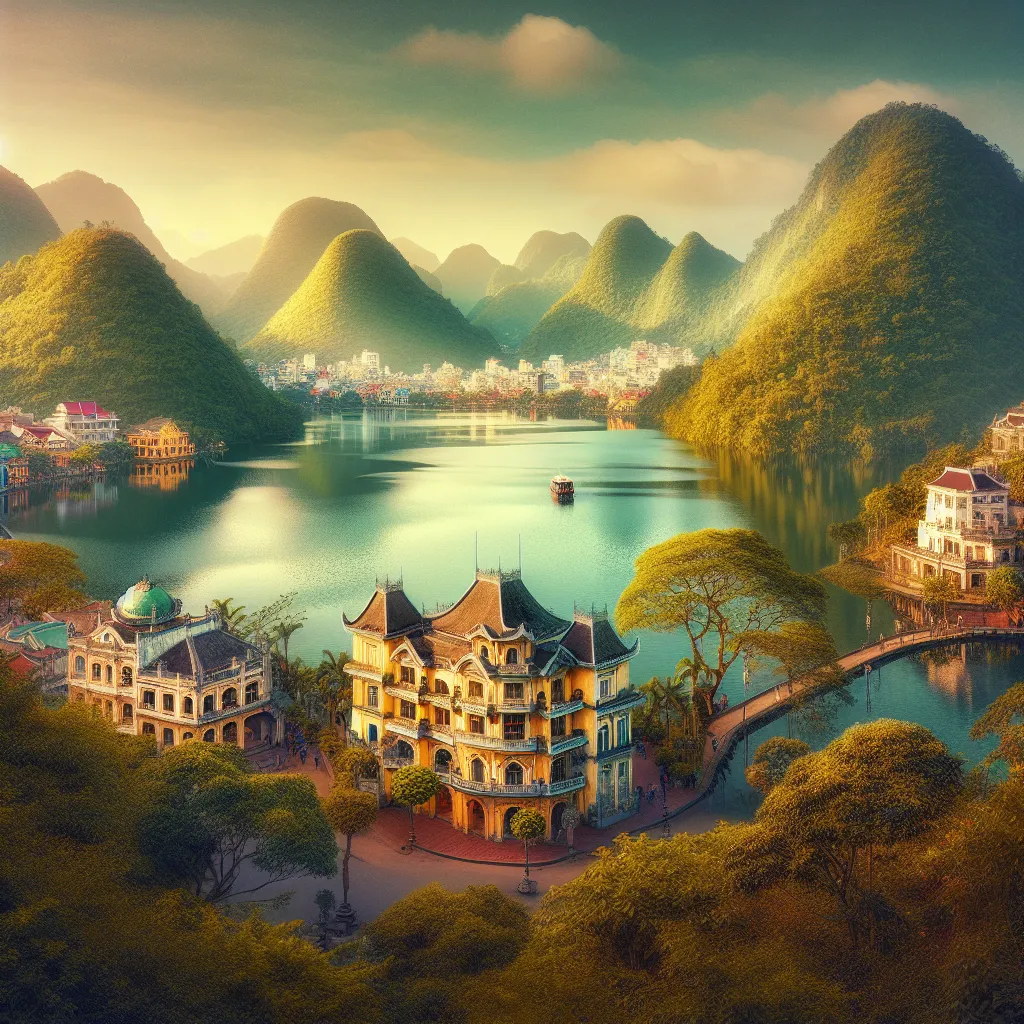The IELTS Speaking test often includes questions about memorable places or experiences. One common topic is describing a place that left a lasting impression on you. This article will provide you with valuable insights, sample answers, and tips to excel in this part of the IELTS Speaking test.
Table Of Contents
Understanding the Topic
Describing a place that left a lasting impression is a popular topic in IELTS Speaking tests. It allows examiners to assess your ability to narrate experiences, express emotions, and use descriptive language. This topic has appeared frequently in past tests and is likely to continue being a staple in future exams.
 IELTS Speaking Test
IELTS Speaking Test
Part 1: Introduction and Interview
In this section, the examiner may ask general questions about places you’ve visited. Here are some possible questions:
- Do you enjoy traveling?
- What’s your favorite place to visit in your country?
- Have you ever been to a place that surprised you?
Let’s look at a sample answer for the third question:
Examiner: Have you ever been to a place that surprised you?
Sample Answer (Band 7-8):
“Yes, absolutely. I was utterly amazed when I visited Halong Bay in Vietnam. I’d seen pictures before, but nothing could have prepared me for the sheer beauty of those limestone karsts rising majestically from the emerald waters. It was like stepping into a surreal painting, and I was completely taken aback by how pristine and peaceful it was, despite being a popular tourist destination.”
Part 2: Long Turn (Cue Card)
Here’s a sample cue card related to our topic:
Describe a place you visited that left a lasting impression on you.
You should say:
- Where the place is
- When you visited it
- What you did there
- And explain why it left a lasting impression on you
Sample Answer (Band 6-7):
“I’d like to talk about a place that really stuck with me – the ancient city of Petra in Jordan. I visited there about two years ago during a summer vacation.
Petra is located in southern Jordan and is famous for its rock-cut architecture. When I got there, I was amazed by the huge, red rock formations. The most impressive part was walking through the narrow canyon called the Siq and then seeing the Treasury building appear. It was just like in the movies!
During my visit, I spent a whole day exploring the site. I hiked up to the Monastery, which was tough but worth it for the view. I also took a guided tour to learn about the history of the Nabataeans who built Petra.
This place left a lasting impression on me for several reasons. First, the scale of the monuments carved into the rock face was incredible. I couldn’t believe people could create something so massive without modern technology. Second, the colors of the rocks were stunning, especially at sunset when everything turned golden. Lastly, learning about the ingenuity of the ancient people who lived there really made me think about human capabilities.
Overall, Petra was unlike anywhere else I’ve ever been. It combined natural beauty, ancient history, and engineering marvels in a way that I found truly unforgettable.”
Sample Answer (Band 8-9):
“I’d like to share my experience of visiting the awe-inspiring Machu Picchu in Peru, which left an indelible mark on my memory. I had the privilege of exploring this UNESCO World Heritage site about 18 months ago during a South American odyssey.
Machu Picchu is nestled high in the Andes Mountains, about 50 miles northwest of Cusco. The journey there was an adventure in itself, involving a scenic train ride followed by a winding bus trip up the mountain.
Upon arrival, I was utterly mesmerized by the sprawling complex of ancient Incan ruins. I spent an entire day immersing myself in the site’s rich history and breathtaking views. I joined a guided tour to gain in-depth insights into the architectural marvels and the sophisticated urban planning of the Incas. One of the highlights was hiking up to the Sun Gate, which offered a panoramic vista of the entire citadel.
This visit left a lasting impression on me for several compelling reasons. Firstly, the sheer engineering prowess displayed by the Incas in constructing this city at such an altitude, without the use of wheels or iron tools, was mind-boggling. The precision of the stonework, where massive blocks fit together so tightly that not even a knife blade can be inserted between them, speaks volumes about their advanced skills.
Secondly, the harmonious integration of human-made structures with the natural landscape was truly awe-inspiring. The terraced fields, the sacred plazas, and the residential areas all seemed to flow seamlessly with the contours of the mountain.
Lastly, standing amidst these ancient ruins, I felt a profound connection to history. It was a humbling experience to realize that I was walking the same paths as the Incan civilization did centuries ago. This tangible link to the past sparked a deep appreciation for the rich tapestry of human history and the importance of preserving such cultural treasures.
In conclusion, Machu Picchu left an indelible impression on me with its blend of historical significance, architectural brilliance, and natural beauty. It broadened my horizons and gave me a new perspective on ancient civilizations and their lasting legacy.”
Follow-up Questions:
- Did you face any challenges during your visit?
- Would you recommend this place to others? Why or why not?
Sample Answer (Band 8-9):
“Indeed, there were a few challenges during my visit to Machu Picchu. The high altitude was initially quite daunting, and I had to take frequent breaks to acclimatize. Additionally, the site can get quite crowded, especially during peak hours, which sometimes made it difficult to fully appreciate the tranquility of the place.
Despite these minor hurdles, I would wholeheartedly recommend Machu Picchu to others. It offers a unique blend of historical significance, architectural marvel, and natural beauty that is truly unparalleled. The experience of witnessing such an extraordinary feat of human ingenuity set against the backdrop of the Andes is simply awe-inspiring. Moreover, it provides valuable insights into the Incan civilization and their advanced knowledge of astronomy, agriculture, and engineering. I believe that visiting Machu Picchu can be a transformative experience, encouraging people to reflect on human history and our relationship with nature.”
Part 3: Two-way Discussion
In this part, the examiner will ask more abstract questions related to the topic. Here are some possible questions and sample answers:
Examiner: How do you think tourism affects historical sites?
Sample Answer (Band 7-8):
“Tourism can have both positive and negative effects on historical sites. On the positive side, it brings in revenue that can be used for preservation and research. It also raises awareness about the importance of these sites, which can lead to more support for their protection.
However, there are also significant drawbacks. Large numbers of visitors can cause physical damage to ancient structures and artifacts. There’s also the risk of over-commercialization, which can detract from the site’s historical and cultural significance.
I believe the key is to find a balance. We need to implement sustainable tourism practices that allow people to experience these amazing places while also ensuring their long-term preservation. This might include measures like limiting daily visitor numbers, improving infrastructure to handle crowds, and educating tourists about the importance of respecting these sites.”
Examiner: Do you think virtual reality could replace physical travel in the future?
Sample Answer (Band 8-9):
“While virtual reality (VR) technology is rapidly advancing and offers some exciting possibilities for experiencing distant places, I don’t believe it will entirely replace physical travel in the foreseeable future.
VR certainly has its advantages. It can provide accessibility to those who are unable to travel due to physical or financial constraints. It also offers a way to explore fragile environments without causing damage. Moreover, VR can enhance pre-trip planning or post-trip reminiscing, allowing travelers to immerse themselves in a destination before or after their physical visit.
However, travel is about more than just visual experiences. It involves all our senses – the smell of local cuisine, the feel of a different climate, the sound of a foreign language. Travel also offers serendipitous encounters and unexpected discoveries that are difficult to replicate in a virtual environment. Furthermore, the personal growth that comes from navigating unfamiliar cultures and overcoming travel challenges is a crucial aspect that VR can’t fully replicate.
That being said, I believe VR will become an increasingly important complement to physical travel. It might be used to ‘preview’ destinations, help in making more informed travel choices, or even to revisit places we’ve been to in the past. In this way, VR could actually enhance our appreciation for physical travel rather than replace it.
In conclusion, while VR will undoubtedly play a growing role in how we experience the world, the irreplaceable aspects of physical travel – the personal interactions, cultural immersion, and sensory experiences – will ensure its continued relevance and appeal.”
Key Vocabulary and Phrases for High Scores
-
Awe-inspiring /ɔː ɪnˈspaɪərɪŋ/ (adjective): Extremely impressive or amazing.
Example: “The Grand Canyon is an awe-inspiring natural wonder.” -
Indelible impression /ɪnˈdelɪbl ɪmˈpreʃn/ (phrase): A lasting effect or influence.
Example: “My first trip abroad left an indelible impression on me.” -
Mesmerize /ˈmezməraɪz/ (verb): To capture one’s complete attention.
Example: “I was mesmerized by the intricate details of the ancient temple.” -
Panoramic vista /pænəˈræmɪk ˈvɪstə/ (phrase): A wide, unbroken view of the surrounding area.
Example: “From the mountaintop, we enjoyed a panoramic vista of the valley below.” -
Immerse /ɪˈmɜːs/ (verb): To involve oneself deeply in a particular activity or interest.
Example: “I love to immerse myself in local culture when I travel.”
Tips from an IELTS Examiner
-
Practice descriptive language: Use vivid adjectives and sensory details to bring your experiences to life.
-
Structure your answer: Organize your thoughts logically, especially in Part 2. Use linking words to connect your ideas smoothly.
-
Show enthusiasm: Examiners appreciate genuine interest in the topic. Let your passion for the place you’re describing shine through.
-
Expand on your ideas: In Part 3, don’t just give short answers. Develop your points with examples and explanations.
-
Use a range of vocabulary: Incorporate less common words and idiomatic expressions, but ensure you use them correctly.
Remember, the key to success in the IELTS Speaking test is practice. The more you familiarize yourself with potential topics and practice expressing your thoughts clearly and confidently, the better you’ll perform on test day.
By following these guidelines and incorporating the sample answers and vocabulary provided, you’ll be well-prepared to tackle questions about memorable places in your IELTS Speaking test. Good luck with your preparation!



